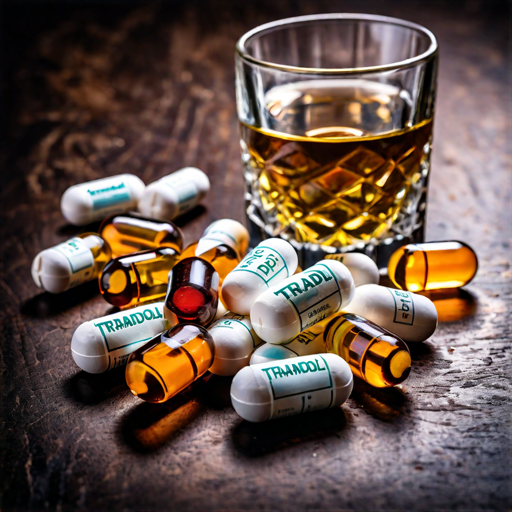- Your cart is empty
- Continue Shopping
Tramadol and Alcohol: A Dangerous Combination to Avoid

Tramadol is a prescription opioid medication used to manage moderate to severe pain. While it is an effective analgesic, tramadol has the potential for serious side effects, particularly when combined with alcohol. Mixing tramadol with alcohol can lead to dangerous interactions that may result in severe health consequences, including respiratory depression, central nervous system (CNS) depression, and even death. In this detailed article, we will explore the risks associated with combining tramadol and alcohol, the effects of each substance on the body, and safe alternatives for managing pain.
The Effects of Tramadol
Tramadol is an opioid medication that works by binding to opioid receptors in the brain and spinal cord, altering the perception of pain. It also inhibits the reuptake of serotonin and norepinephrine, which can have an impact on mood and pain perception.
Side effects of tramadol include:
- Drowsiness and sedation
- Dizziness and confusion
- Nausea and vomiting
- Constipation
- Headache
Tramadol has the potential for abuse and dependence, particularly when taken in higher doses or for extended periods. It is crucial to follow the prescribed dosage and seek medical advice if you experience any adverse effects.
The Effects of Alcohol
Alcohol is a depressant that affects the central nervous system, slowing down brain function and body processes. Consuming alcohol can lead to drowsiness, impaired judgment, and loss of coordination.
Side effects of alcohol consumption include:
- Drowsiness and sedation
- Slurred speech
- Impaired coordination
- Reduced inhibitions
- Nausea and vomiting
In excessive amounts, alcohol can cause severe liver damage, addiction, and even death. It is important to consume alcohol in moderation and be aware of its effects on the body.
The Risks of Combining Tramadol and Alcohol
Combining tramadol and alcohol can amplify the effects of both substances, leading to potentially life-threatening situations. Major risks of mixing tramadol and alcohol include:
- Respiratory depression: Both tramadol and alcohol depress the respiratory system, and their combination can cause breathing difficulties or respiratory failure.
- Central nervous system (CNS) depression: The combined sedative effects of tramadol and alcohol can result in extreme drowsiness, confusion, and loss of consciousness.
- Increased risk of overdose: Combining tramadol and alcohol can lead to an increased risk of overdose due to the additive effects on the body.
- Enhanced side effects: The combination may intensify side effects such as dizziness, nausea, and impaired coordination.
- Potential for dangerous interactions: Both tramadol and alcohol can interact with other medications, and combining them can increase the risk of adverse reactions.
Managing Pain Safely
If you are taking tramadol to manage pain, it is essential to avoid alcohol entirely. Mixing tramadol and alcohol can lead to severe health risks and complications. Here are some safe alternatives for managing pain:
- Consult with a Healthcare Provider
- Talk to your healthcare provider about your pain management options and any concerns you may have about tramadol and alcohol interactions.
- Your provider can recommend alternative medications or therapies that do not involve the risk of mixing tramadol and alcohol.
- Non-Opioid Pain Relievers
- Non-opioid pain relievers such as acetaminophen or ibuprofen may be suitable alternatives for managing pain without the risks associated with tramadol and alcohol.
- Always use non-opioid pain relievers as directed by your healthcare provider.
- Physical Therapy
- Physical therapy can help manage pain through exercise, stretching, and other therapeutic techniques.
- Working with a licensed physical therapist can improve mobility and reduce pain.
- Cognitive Behavioral Therapy (CBT)
- CBT can help manage chronic pain by addressing the psychological aspects of pain and teaching coping strategies.
- This therapy can also help individuals manage anxiety or depression related to pain.
- Mindfulness and Relaxation Techniques
- Practices such as meditation, yoga, and deep breathing exercises can help manage pain and reduce stress.
- These techniques may complement other pain management strategies.
Conclusion
The combination of tramadol and alcohol is a dangerous one that can lead to serious health consequences. It is crucial to avoid mixing these substances and to seek medical advice if you have concerns about your pain management regimen. By exploring safe alternatives and working closely with a healthcare provider, you can effectively manage pain without putting your health at risk.
